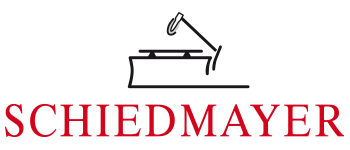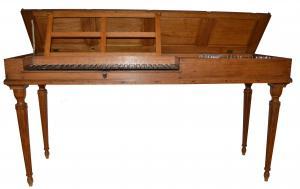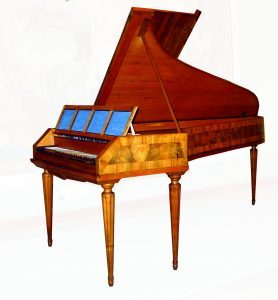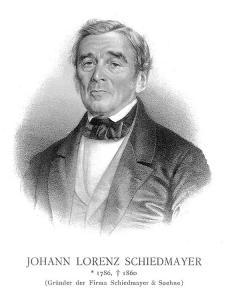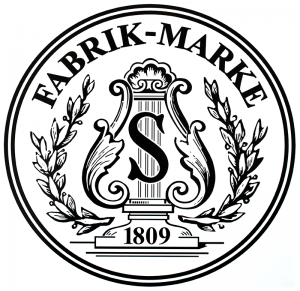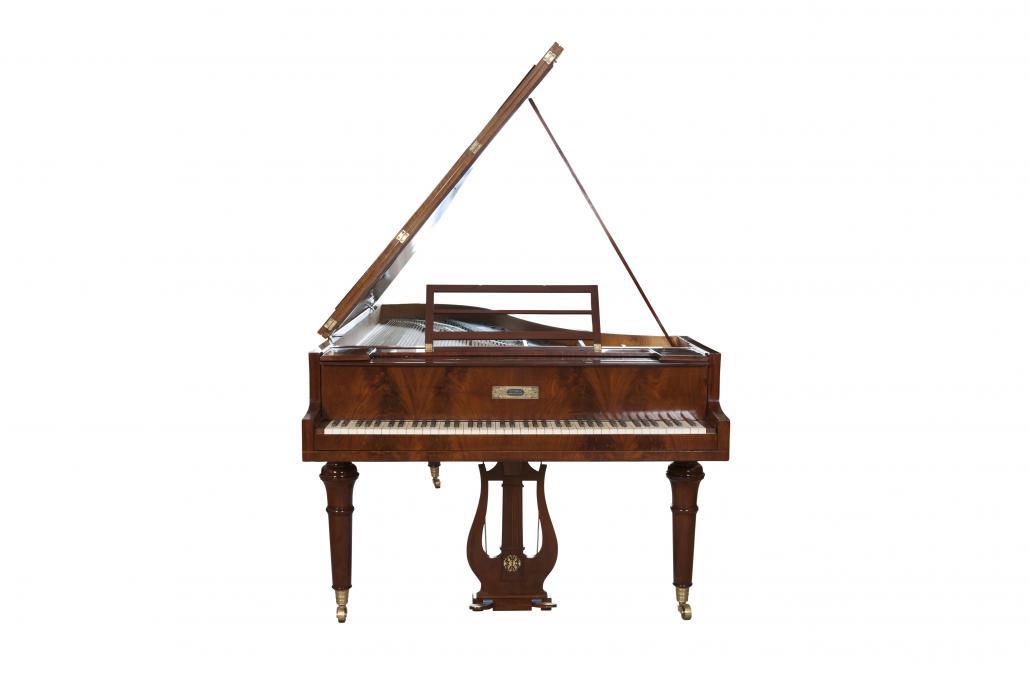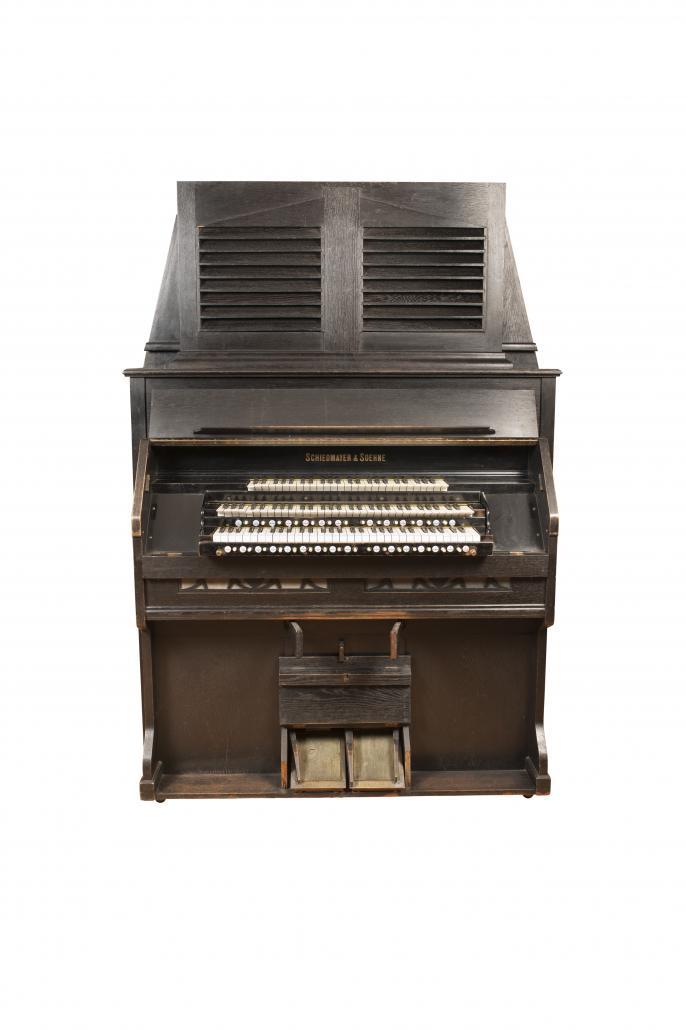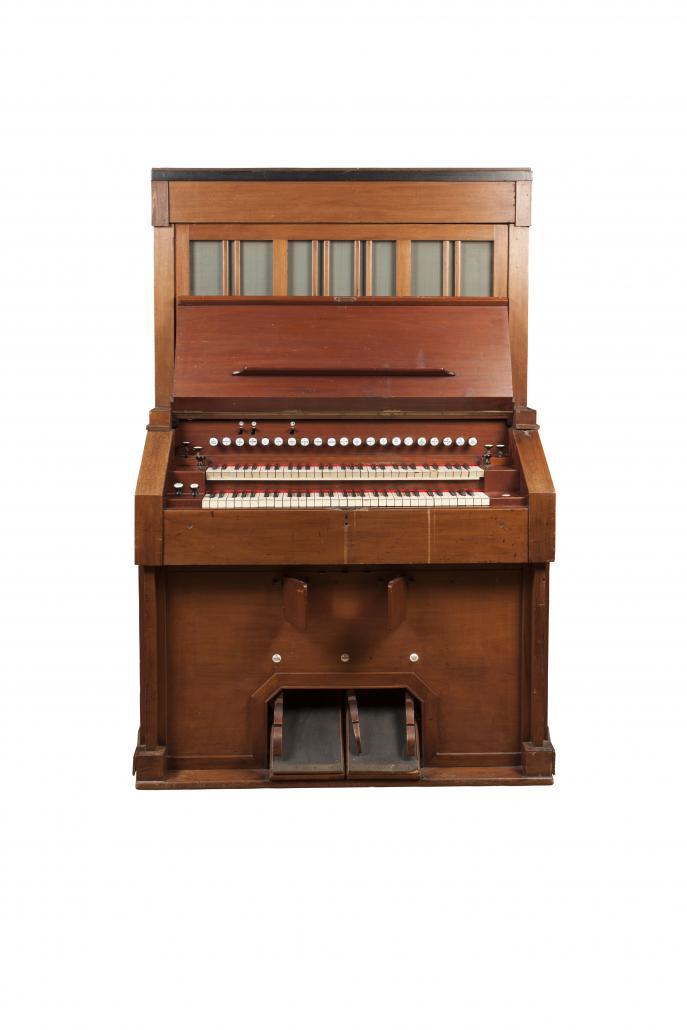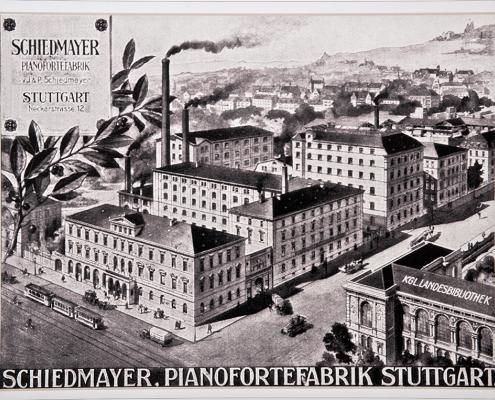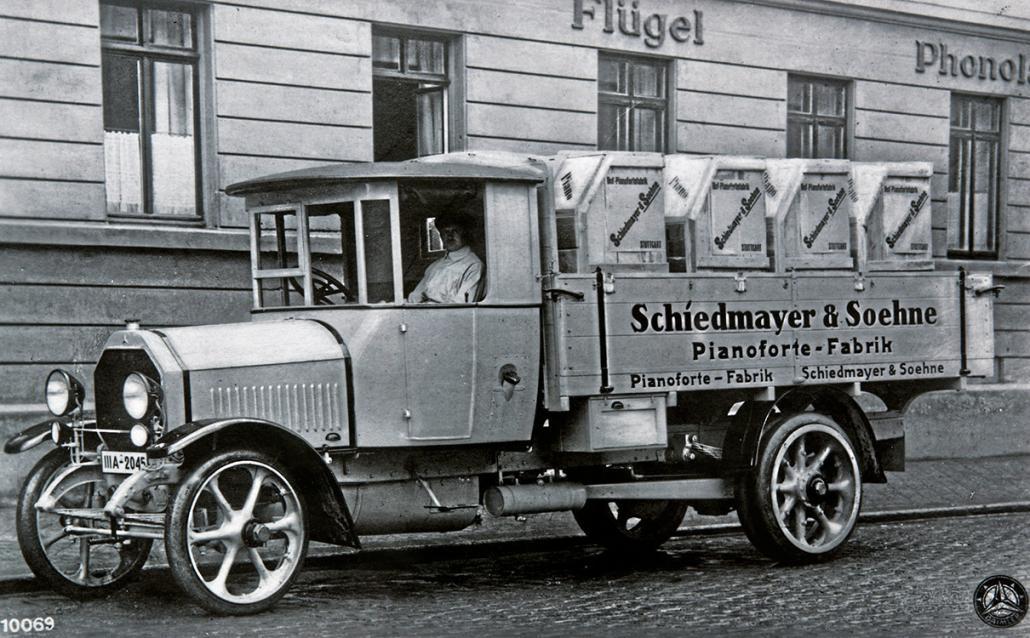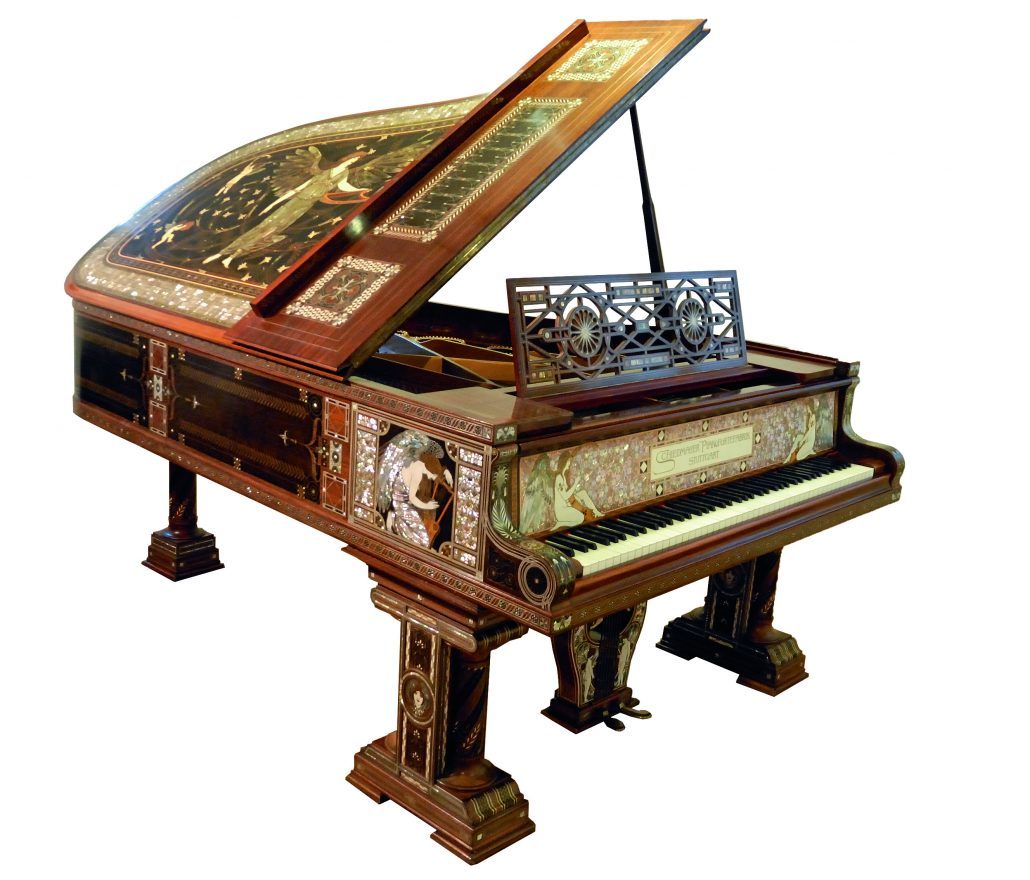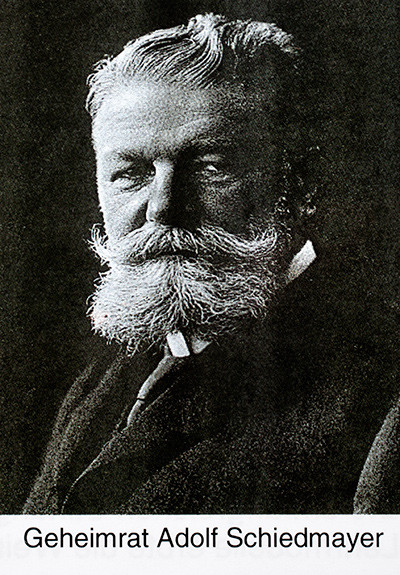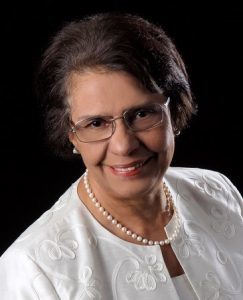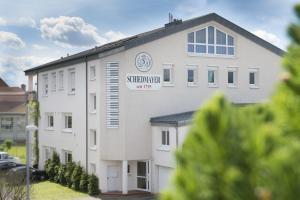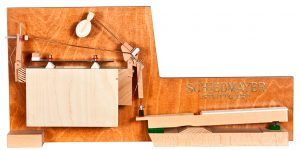Company history
The Schiedmayer Family – Serving the Music Since 1735
The Schiedmayer family has been active for nearly 300 years in the manufacture of keyboard instruments. It is a rare event in the history of musical instrument manufacturing that members of the same family have dedicated themselves to a continually evolving craft for an uninterrupted 300 years.
The Beginnings of a Piano Building Dynasty
On October 25, 1711, Balthasar Schiedmayer, who was to become the patriarch of a piano manufacturing dynasty, was born in Erlangen. After learning the carpentry trade, he had already constructed his first clavichord by 1735. At that time, musical instruments were made primarily by carpenters, who had to apply to the city magistrate to obtain an official certificate of proficiency. In the Erlangen city register he is listed as organ and piano maker. One of Schiedmayer’s most important customers was the hard-to-please composer and organist Christian Friedrich Daniel Schubart, who, wrote in his memoirs in 1791: “I was at the time the best keyboard player and poet in Erlangen…Driven by passions, I flitted thoughtlessly among my friends, without order, without wisdom, without diligence, without frugality, accumulating debt upon debt. My creditors threw me in jail where I languished for four weeks. With visits from my friends, a disconsolate girlfriend and a good piano from Schüttmayer, I could nearly forget the shame of imprisonment…”
Birthplace of company founder Balthasar Schiedmayer | Erlangen
Clavichord | 1793 | Johann Christoph Georg Schiedmayer | Neustadt an der Aisch
Successful Sons
Unfortunately, no instruments made by Balthasar Schiedmayer have survived. He died on October 5, 1781, leaving behind his three sons (Johann Christoph Georg (1740-1820), Adam Achatius (1745-1817) and Johann David Schiedmayer (1753-1805)) and an extensive knowledge base of skills, in addition to the house and workshop on 27 Theaterstrasse in Erlangen. The oldest son, Johann Christoph Georg, settled in Neustadt an der Aisch and became a well-known clavichord maker. In contrast to his brother Johann David, he left no shop record book listing the number, kind or recipient of the instruments he made. Some of his clavichords have survived and can be viewed at the Landesmuseum of Stuttgart and the Museum of Fine Arts in Boston, Mass., USA, among other places. Balthasar’s second son, Adam Achatius, spent his whole life as a piano maker in his birthplace, Erlangen. A square piano made in 1818 by his son Johann Erhard has survived and was played on 10.16.2011 in conjunction with the celebration of the 300th birthday of the firm’s founder.
Fame as Piano Maker
The youngest and most famous of Balthasar Schiedmayer’s sons was Johann David. He learned the basics of piano manufacturing from his father, and his fame as a piano maker spread quickly after he established his own workshop in 1781. In 1778 he had studied in Augsburg in the workshop of Johann Andreas Stein. Johann David resettled in Erlangen after the death of his father in 1781. A while later he followed his master carpenter to Nuremberg, since only he could do adequate justice to Johann David’s high standards. The Schiedmayer workshop in Nuremberg was in a house at 5 Am Spitzberg, which was destroyed in World War II. Schiedmayer required two to four months for the manufacture of a fortepiano, building the instrument essentially with his own hands. The long fabrication time is reflected in the outstanding precision in his instruments, which gives them a preeminent position to this date. One of his instruments, a fortepiano no. 7 from the year 1783, was played during the anniversary celebration on October 16, 2011. Luckily, the shop records of Johann David have survived, including the following entry regarding this fortepiano: “H. von Kerpen, Cathedral Capitulary in Würzburg, received the 7th instrument. It was accepted with great approval, the price set at 300f. It left my hands on December 5, 1783, having accompanied it myself to Würzburg.”
Hammerflügel | 1783 | Johann David Schiedmayer | Erlangen
A Wonderful Hammerflügel
Carl Friedrich Cramer described this instrument in his Magazin der Musik, Hamburg 1783-87, II/1, p. 126: “December … 1783/ Musical Personalities in Erlangen…N.S. The wonderful fortepiano, which last week left the hands of the local instrument maker Mr. Johann David Schiedmayer, destined for Würzburg, also deserves mentioning since it is finished as splendidly as others that he has produced.”
Court Instrument Maker
Apparently, Schiedmayer’s health was always precarious, to cite the news report from the Royal town of Nuremberg: “On March 20, 1805 Mr. Johann David Schiedmayer, court instrument maker for the Princely Court of Brandenburg and honorary member of the Society for Furthering the Local Industry passed away here at age 52. He became famous through his unforgettable talent for manufacturing splendidly finished instruments.
A Joint Firm in Stuttgart
In the next generation came the most famous of Balthasar’s grandchildren: Johann Lorenz son of Johann David (born in Erlangen in 1786 – died in Stuttgart in 1860). He was the first Schiedmayer to settle in Stuttgart. Johann Lorenz learned the trade from his father and at first continued running his father’s workshop as well as keeping the shop records. But when Nuremberg was annexed to Bavaria in 1806 he left and moved to Vienna, to the friendly piano workshop of Andreas and Nanette Streicher. There he met and befriended the young piano maker Carl Friedrich Dieudonné of Ludwigsburg. When Vienna was occupied by the French for the second time, the two friends decided to leave the city and relocate to Stuttgart. Thus the firm of Dieudonné and Schiedmayer was formed in Stuttgart 1809 in a building behind the house on 4 Charlottenstrasse. The two friends were determined to continually improve their production techniques. They introduced the English mechanism and adapted their production techniques to it. Soon their enterprise became known beyond the boundaries of the region.
Fabrik – Marke | SCHIEDMAYER 1809 – STUTTGART
Hammerflügel | ~ 1814 | Johann Lorenz Schiedmayer | Stuttgart
The New Construction in Stuttgart
A steadily growing demand necessitated the enlargement of the facility, and in 1821 they moved to a new building on Neckar Street, now Konrad Adenauer Street, designed by Thouret, architect of the imperial court. Today the House of History and the State Academy for Music and Representative Arts stand on the former Schiedmayer lot. From this it can be concluded that Johann Lorenz must have been the co-founder of the Music High School/ Music Academy.
A Booklet for Pianists
In 1824, Dieudonné and Schiedmayer published a small booklet, “A Short Introduction to the Proper Knowledge and Care of Forte-Pianos including their Playing, Tuning and Maintenance, in particular Those Made in the Stuttgart Workshop of Dieudonné and Schiedmayer.” A reprint of the booklet was published in 1994 by Elianne Schiedmayer. This work is recommended to every piano maker using either the German or English mechanism.
Johann Lorenz takes over
When Dieudonné died in 1825, Lorenz became the firm’s sole owner with full responsibility for the work. He undertook this task very successfully, as can be seen from the long list of customers and his shipments all over the world. Piano virtuosos and composers, such as Friedrich Silcher, Clara Schumann and Franz Liszt, were already closely associated with the firm Schiedmayer. In connection with the anniversary celebrations on 10.16.2011, Dr. Wolfgang Seibold presented a lecture on “Franz Liszt and his relationship with the House of Schiedmayer.”
The First Reed Organ Factory in Germany
Johann Lorenz had four sons and one daughter, all piano makers. In 1845, the two older sons, Adolf and Hermann, became partners in their father’s enterprise. Thus, the firm Schiedmayer und Soehne, Court Piano Manufacturers, was established. The father sent the two younger sons to Paris, to study the manufacture of reed organs (harmoniums) at Debain. In 1853 upon their return to Stuttgart, their father built for them a workshop for reed organ manufacture adjacent to his plant on Neckar Street. There followed the establishment of the first reed organ factory in Germany, the firm J & P Schiedmayer, later Schiedmayer Pianofortefabrik.
Kunstharmonium | 1910 | Schiedmayer & Soehne | Stuttgart
Kunstharmonium | 1912 | Schiedmayer Pianofortefabrik | Stuttgart
The Two Stuttgart Factories
Schiedmayer & Soehne | Neckarstrasse 14-16 | Stuttgart
Schiedmayer Pianofortefabrik (formerly J. & P. Schiedmayer) | Neckarstrasse 12 | Stuttgart
Schiedmayer & Sons and J & P Schiedmayer became the two largest piano manufacturing firms in South Germany. The company was comprised of two main plants in Stuttgart and satellite plants in Ulm and Plochingen, as well as branches in Berlin and Saarbrücken. In 1890 J & P Schiedmayer started producing celestas, in addition to small upright pianos, grand pianos and reed organs. It also produced unusual hybrid instruments such as: the Schiedmayer-Scheola, a combined reed organ and celesta; and mechanical instruments (Phonola: a player piano with a Hupfeld mechanism).
A Family Rivalry
It was expressly stipulated that the parent factory (Schiedmayer & Sons) would exclusively manufacture pianos, while reed organs were to be built in the junior plant. Thus, two plants named Schiedmayer existed in Stuttgart. The family head, Johann Lorenz, died in 1860, and against his wishes the younger sons began the manufacture of pianos, while the older ones started to build reed organs. Thus the relatives became competitors.
More Firms
The Competition did not end there. The daughter of Johann Lorenz, Louise Schiedmayer, married Karl Müller. Their son Erwin Müller-Schiedmayer learned piano building from his four uncles in Stuttgart and worked at Steinway & Sons in New York from 1868 until 1873. He established the piano manufacturing firm of Müller-Schiedmayer in Würzburg in 1874. The last bearer of the Müller name was Erwin Müller Jr., born in 1898. The plant was destroyed during World War II. The business was sold in 1968 to the Karl Lang Piano Company in Munich which was taken over by the Steinway Company Munich in 2001.
Economic Boom
When J. L. Schiedmayer died in 1860, he bequeathed to his sons a plant which long ago had ceased to be a mere workshop and had become a major industrial enterprise that rightly garnered many awards. By 1861 his son Hermann Sr. also died, and the sole responsibility for the firm of Schiedmayer & Sons fell to the other son, Adolph Sr.. The general economic boom at the end of the nineteenth century helped; worldwide exports garnered awards, medallions and honorary diplomas for the firm.
Purveyor to the Court
But the large number of orders did not cause the judicious Adolf Schiedmayer to forget his father’s basic principle, that quality and constant personal supervision were essential to insure the firm’s reputation. It became impossible for Adolph Sr. to manage the firm by himself. Adolph Jr., his son, and Hermann Jr., his nephew, both trained in major international piano companies, became his co-workers and, in 1875, partners in the firm that was named purveyor to the Court of Württemberg. In recognition of his contributions to the city and country Adolf Jr. was appointed Commercial Privy Councilor in 1881.
Grand Piano | Schiedmayer Pianofortefabrik
custom-made for Peter Behrens (Architect & Designer) | 1902
Museum for applied Arts | Cologne
Grand Piano | Schiedmayer Pianofortefabrik
custom-made | desigend by Robert Knorr | World Exhibiton Paris | 1900
Landesmuseum Württemberg | Haus der Musik im Fruchtkasten | Stuttgart
Adolf Schiedmayer Jr. (1847-1921)
Life Work Destroyed
The centenary of the firm was celebrated in Stuttgart in 1909. Among the congratulations one came from King Wilhelm II and Queen Charlotte. No one could foresee that World War I would break out five years later. The war brought many losses including border closings, and shortages of materials and workers. In 1919 Adolf Jr., together with his nephew Gustav (son of Hermann Jr.), succeeded in reviving the firm to some extent. But when World War II broke out, the Schiedmayers found themselves in the same situation as 25 years previously with no materials, no work force and no contact with foreign customers. The plant was hit by bombs three times. The third time, on the night of July 26, 1944, it burned to the ground. The life work of the piano manufacturing family Schiedmayer in Stuttgart was wiped out. The company suffered a heavy blow.
Post-War Reconstruction
After the war in 1946, only a few people believed in the possibility of reconstruction. However, he business head at the time, Gustav Schiedmayer (1883-1957), great-grandson of Johann Lorenz, did not despair. Already in September 1946, temporary reconstruction was started with the means at hand. In the 1960s, Gustav Schiedmayer and his son Georg (1931-1992) drew up a number of plans and applied for reconstruction permits. They were all rejected and finally permanently denied, since the cultural center was already planned for this lot. In 1969 Schiedmayer had to abandon the lot under threat of expropriation. Today, the House of History and the State Academy for Music and Representative Arts stand on this lot.
Manufacturing in Altbach
In the same year, 1969, Georg Schiedmayer personally took over from Max and Hans Schiedmayer the firm of Schiedmayer Pianofabrik, formerly Julius & Paul Schiedmayer, as sole owner and manager. The manufacture of Schiedmayer & Sons instruments was transferred to the J. & P. Schiedmayer plant in Altbach/Plochingen and production resumed. Luckily this building had not been destroyed in the war.
Schiedmayer factory | Altbach
Piano Production Discontinued
Piano production was closed down completely in 1980. The markets were saturated and Asian piano brands became more and more established as global competitors. Cooperation with the Ibach company to produce pianos under the Schiedmayer label turned out to be impractical, and Georg Schiedmayer quickly withdrew from this unrewarding collaboration. Although Ibach continued to produce pianos under the Schiedmayer label, the Schiedmayer musical-instrument-building dynasty established in 1735 has nothing to do with pianos manufactured by Ibach. This refers in particular to the so-called Schiedmayer Pianos produced for Ibach by the firms of Roth & Junius, Young Chang, Concorde, Kawai, Sauter, Seiler and Steinberger. We want to emphasize that neither the firm of Schiedmayer & Sons nor Schiedmayer Pianofortefabrik, formerly J. & P. Schiedmayer, ever sold their logos or trademark to Ibach.
The Schiedmayer Pianofortefabrik, formerly J. & P. Schiedmayer, which remained the property of Georg Schiedmayer and Elianne Schiedmayer, was still registered under the number HRA 761 at the District Court in Stuttgart. In 2008 the District Court ordered to dissolve the company due to inactivity.
The Specialization in Celestas
In the course of the takeover of the Schiedmayer Pianofortefabrik, the firm of Schiedmayer & Sons extended its business portfolio by incorporating the celesta production. This instrument, invented by Victor Mustel (Paris) in 1886, has been manufactured since 1890 by. J. & P. Schiedmayer (renamed to Schiedmayer Pianofortefabrik in 1875).
In 1980 the firm of Schiedmayer & Sons was rebranded as Schiedmayer & Sons, GmbH & Co. KG. In charge are Georg Schiedmayer and his mother Henriette (Hete) Schiedmayer, née Siekmeyer. From that date on the family Schiedmayer has specialized solely on the production of celestas and the keyboard Glockenspiel.
Elianne Schiedmayer Takes Over
In 1985 the production of celestas and keyboard glockenspiels was relocated to Wernau near Plochingen. Seven years later Georg Schiedmayer died unexpectedly. His widow Elianne Schiedmayer, nee Villard, pianist and music pedagogue, took over the directorship of the firm. She decided in 1995, (after the death of her mother-in-law Henriette Schiedmayer) to found Schiedmayer Celestabau GmbH. Five years later, in 2000, the enterprise moved to its own facilities in Wendlingen am Neckar, near Stuttgart, and since 2003 has traded under the name “Schiedmayer Celesta GmbH. Executive Partner: Elianne Schiedmayer.
This company was founded on the fortunate decision of Georg Schiedmayer in 1980 to specialize on the production of celestas and keyboard glockenspiels with wooden resonators. Schiedmayer instruments continue to be produced in Wendlingen and are truly “Made in Germany.” The product line encompasses four models of celestas (4 to 51/2 octaves), keyboard glockenspiels and integrated celestas/glockenspiels.
Schiedmayer instruments represent the finest quality in handcrafted instruments. Their quality derives not only from the skill of the workers, but also from the specially seasoned materials chosen for the instruments. At Schiedmayer, a celesta takes up to twelve weeks to finish.
Elianne Schiedmayer
Headquarters and Manufacture in Wendlingen am Neckar | Germany
The Celesta – Invention & Construction
Schiedmayer Celesta GmbH is today the only firm worldwide that builds celestas according to the original construction and specifications of its inventor, Victor Mustel.
The firm of Schiedmayer wishes to take this opportunity to point out that there unfortunately have been and continue to be offered for sale, instruments called “celestas”, which, however, do not correspond to the spatial and mechanical specifications of Mustel, and are, therefore, not true celestas. Among others, the Japanese firm Yamaha – formerly a customer of the Schiedmayer factory – has been producing since 1993 a new instrument with a grand piano mechanism (a different mechanism from that which Mustel specified for the sound production) which it calls “celesta.” In this new instrument the sound plates are struck from below, as in a piano. The Wendlingen firm of Schiedmayer Celesta GmbH has no objection to competition when it is fair. Industry insiders know that each musical instrument has its own construction specifications and with it, its own name. A spinet, for instance, is not a harpsichord, a clarinet not an oboe, and a guitar not a lute.
The worldwide success of the Schiedmayer celestas comes as a result of a combination of the exclusive use of the best materials with knowledgeable and dedicated craftsmanship, together with over 120 years of experience in the production of celestas.
The Celesta Action
On the International Stage
Worldwide, there is hardly an orchestra, opera house, theater, music academy, recording studio or broadcasting studio where the Schiedmayer instruments cannot be heard. Accordingly, the enterprise has delivered instruments to such well known and prestigious orchestras and halls as the Berlin Philharmonic Orchestra, the New York Philharmonic Orchestra, the Stuttgart Opera House, the London Symphony Orchestra, the Juilliard School of Music, the Stuttgart State Academy for Music and Representative Arts, the Vienna State Opera and the Opera House in Shanghai. The Norwegian band “a-ha” and the orchestra of André Rieu have ordered their celestas from Schiedmayer as well. Even in remote southern hemisphere locations, such as Frutillar Bajo in Chile and Hobart in Tasmania Schiedmayer instruments can be found today.
Are you interested in our instruments?
We would be happy to inform you about our instruments and offers
